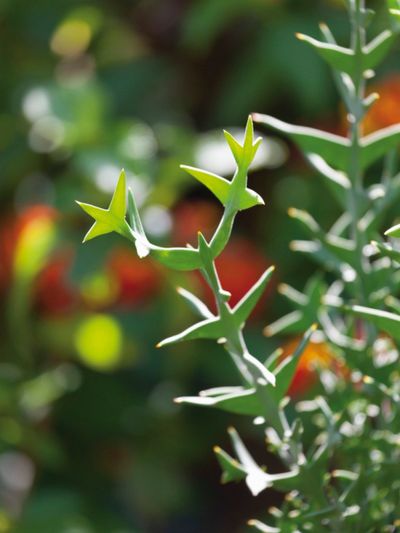What is a Colletia Plant?
Gardeners are often searching for that unusual, second look plant for their landscape. Crucifixion thorn plants could provide just the right amount of drama and distinctive form. However, they are very rare plants and usually only found in botanical gardens where special cultural steps for successfully growing anchor plants can be taken to mimic their native range. The plants are found from Uruguay, west to western Argentina and into southern Brazil. Colletia anchor plant (Colletia paradoxa) is a shrub that may grow up to 8 feet (2.4 m.) tall and wide. It is a tropical to sub-tropical specimen that has flat, 2-inch (5 cm.) wide triangular stems tipped with spines. These are grayish green and resemble an anchor or jet plant propeller, which leads to another common name, Jet Plane plant. The stems are photosynthetic and called cladodes. From these, almond scented, creamy ivory flowers appear at the stem joints from summer until fall. Leaves are tiny and insignificant, appearing only on new growth.
How to Grow Colletia Plants
There are very few collectors that have Colletia for sale or trade. If you are lucky enough to find one, you will need some tips on how to grow Colletia. Anchor plants are xeriscape flora which need well drained, gritty soil and full sun. Once established, they need very little water and are deer tolerant. Crucifixion thorn plants are winter hardy down to 20 degrees Fahrenheit (-6 C.) with some protection and a thick winter layer of mulch over the root zone. Any damage can be pruned off, but be careful of those spikes! The bush can also be trimmed to maintain size and keep stems dense. Colletia produce some seed but it is difficult to germinate and growth is extremely slow. A better way to propagate the species is through semi hardwood to hardwood cuttings. Take non-flowering early side shoots in early fall and pot them up in a cold frame to over winter. Rooting can be very slow, up to 2 years, so be patient and keep the cutting lightly moist. Transplant when the cutting has a full root mass. If you wish to try growing anchor plants from seed, sow in spring in containers or a prepared seed bed. Keep them damp until germination and then just lightly moist. Colletia doesn’t need much fertilizer but a good light dilution of fish emulsion will benefit seedlings once they are 2 inches (5 cm.) high.
